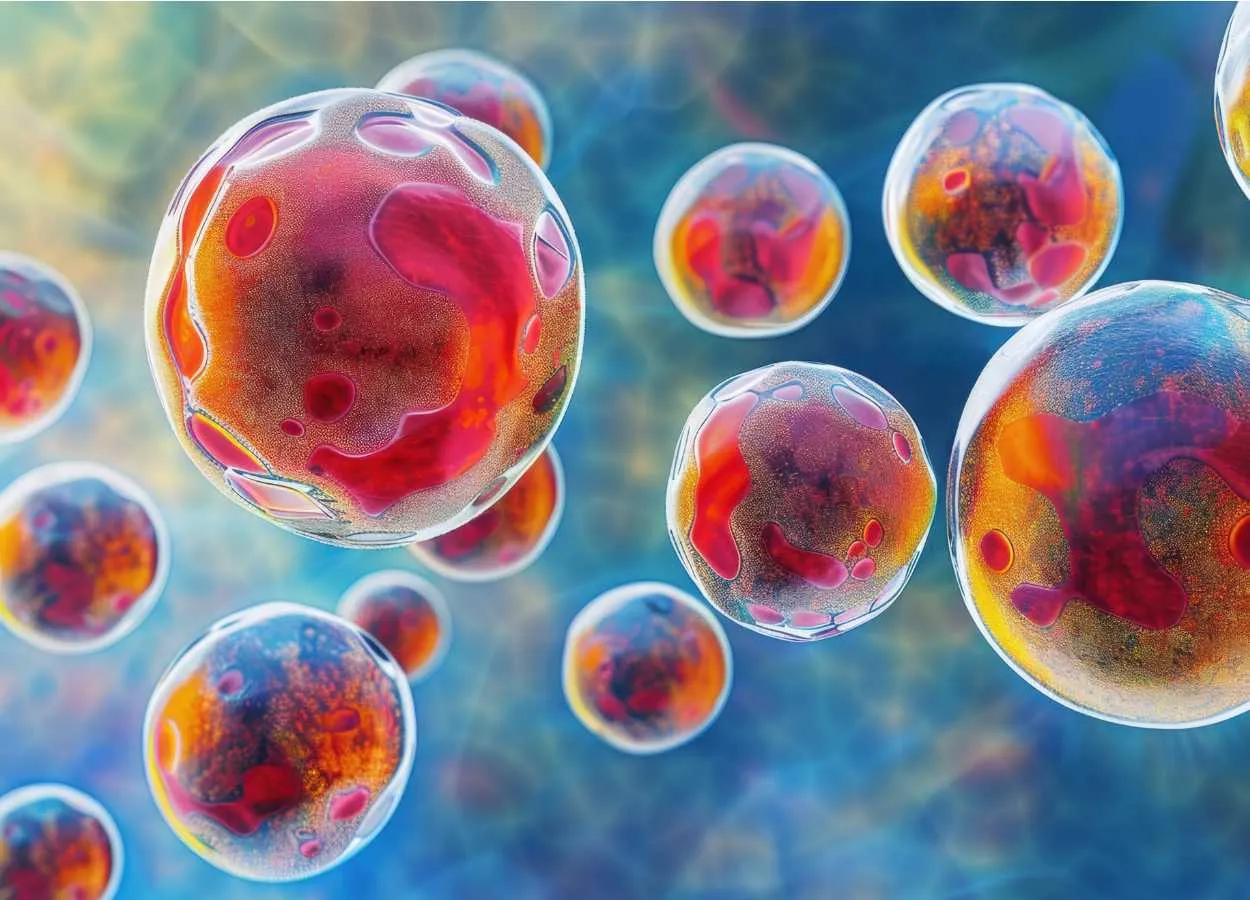In a breakthrough that reshapes our understanding of how the body manages fat, researchers have discovered that a well-known fat-burning enzyme, Hormone-Sensitive Lipase (HSL), has a second, unexpected job—acting inside the cell nucleus to regulate how fat cells grow, store energy, and function.
The study, published in Cell Metabolism, reveals that HSL isn’t just a metabolic workhorse breaking down stored fat. Instead, a portion of the enzyme travels into the nucleus of adipocytes (fat cells), where it helps maintain healthy fat tissue and influences key genetic programs.
A Familiar Enzyme With an Unexpected Role
For decades, HSL has been considered a purely cytosolic lipase: an enzyme responsible for freeing fatty acids during fasting or exercise. But the new research shows that HSL routinely slips into the nucleus, where it acts as a regulator of gene expression—behaving like a molecular “messenger” rather than a fat-splitting blade.
When researchers disrupted HSL’s ability to enter the nucleus, mice rapidly lost adipose tissue mass, even when their fat-breaking ability was intact. This suggests that nuclear HSL is essential for maintaining fat stores—not by digesting lipids, but by controlling the identity and metabolic maturity of fat cells.
Controls Mitochondria, Extracellular Matrix, and More
In human adipocyte models, silencing HSL triggered a cascade of changes:
• Genes involved in mitochondrial energy production were altered
• Structural components like the extracellular matrix (ECM) were disrupted
• Adipocyte metabolic programs shifted away from healthy function
These sweeping changes occurred independent of HSL’s lipase activity, meaning the enzyme has a “moonlighting” nuclear function separate from fat breakdown.
A Tug-of-War Between Diet and Hormones
The team also found that HSL’s location inside the cell changes depending on nutritional conditions:
• During high-fat feeding, HSL accumulates inside the nucleus
• During fasting, hormonal signaling causes HSL to exit the nucleus
• This suggests the enzyme acts as a nutrient sensor—carrying metabolic signals to the genetic control center of fat cells.
A key player in this movement is SMAD3, a molecule in the TGF-β pathway. When HSL binds to SMAD3, it is guided into the nucleus. Conversely, phosphorylation (a chemical modification triggered by hormones like adrenaline) pushes it back into the cytosol.
New Pathways for Obesity and Metabolic Disease Treatments
Because nuclear HSL influences adipocyte health, energy balance, and mitochondrial function, it presents a potential new therapeutic target for conditions such as:
• Obesity
• Lipodystrophy
• Insulin resistance
Age-related metabolic decline
Instead of blocking HSL’s enzymatic fat-breaking function—as some earlier drug attempts have done—future therapies might target its location, its interaction with SMAD3, or its genetic regulatory functions.
A Paradigm Shift in Fat Biology
This study overturns decades of textbook understanding by proving that a major metabolic enzyme doubles as a nuclear regulator. It shows adipose tissue isn’t merely a passive fat depot, but a dynamic organ shaped by signals that dictate its growth and metabolic identity.
By revealing HSL’s unexpected nuclear role, scientists have opened the door to a new generation of metabolic research—one that looks not just at burning fat, but at reprogramming the very genes that determine how fat cells behave.








